You are using an out of date browser. It may not display this or other websites correctly.
You should upgrade or use an alternative browser.
You should upgrade or use an alternative browser.
Crossfire sleeper
- Thread starter Kane
- Start date
Kane, our poor CFI gets no love, lol
No doubt!
And... it truly earned most of the bad rep it had in many respects- runner size, cam, ECM, etc- when it comes to performance numbers. The other half of the bad rep seems to have come from people that didn't know what they were working with and/or had mechanical issues like worn TB shafts and bent linkages.
It's not just limited to the general populace. I once had a local Corvette shop tell me they refuse to work on CFI cars unless the EFI was already working well when it came through their doors.
People love to bash things. I still have folks walk up to me and to tell me "No CFI car can run well. Ever." or "They are all garbage". When those people hear the exhaust (cam), see the OE air cleaner, and go for a ride (OE CFI runs out of steam before 4,800rpm and that's when I've just hit peak torque when you look at the VE tables)... it makes them rethink their preconceived notions.
At some point it resembles the OE CFI because that was the plan- but it has less in common (GM parts) with the OE set up than people realize at first glance. Which makes it all the more fun to challenge perception and what people think they know or see.
I've learned an immense amount about EFI, tuning, and so much more over the last couple of years. And I still have so much to learn.
Last edited:
Drawmain
Well-Known Member
Indeed. You've seen my build, and I'm still tuning as well, when I have the time. Had to send off my intake though, it had some issues, so I'm stalled waiting for it to return. The funny thing is, when CFI came out it was the king of the hill as far as American production cars. No car made by GM had more torque or horsepower in 1982 than the Corvette. And the CFI runs incredibly well in its stock form, it was very reliable. Just goes to show you how bad stories travel farther than good ones.
the basic cross ram intake design has a lot going for it, its very compact and efficient.
where the chevy crossfire intake design fails is the port size runner length and the cylinder heads were all designed to maximize off idle torque with almost no concern for power potential once the rpm range exceeded 4000 rpm,
(exactly where the typical offanhauser cross ram intake just starts to shine in its power curve, with its much larger and more efficient intake design)
crossfire , (notice the much smaller runner size , less than 1/2 the cross sectional volume of the offy)
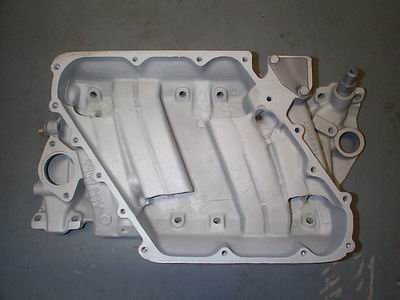
the 1984 cross fire vetttes L83 engine has some of the worst OEM heads ever put on any corvette
As noteworthy as these features appeared to be on the surface, much of the L83’s potential performance was stifled due to GM’s use of restrictive, undersized ports for the Cross-Fire’s intake. These ports were only ⅔ the size of those on the Cross-Fire’s cylinder heads, and as a result, limited maximum flow to no more than 475-cfm.
As a product of this restrictive intake flow, the L83’s torque peaked at only 2,800 RPM, falling off sharply once reaching 4,000 RPM. According to GM, this level of restriction was purposely engineered with the intent of providing more usable street torque. However, many have theorized that this was no more than a ploy to increase fuel economy, in a bid to meet CAFE mandates.
Even with its limitations, the L83 produced 205 horsepower at 4,300 RPM and 290 lb-ft. of torque at 2,800 RPM, with a 9:1 compression ratio. The L83 equipped 1982 Corvette was capable of completing a 0-60 MPH pull in 8.1 seconds and posted 15.9 second times in the quarter-mile. While many perceive these figures to be mediocre at best, the 1982 Corvette still holds the distinction as being one of the fastest new American production cars during its given production year.
OFFANHAUSER BELOW
https://oldcarmemories.com/1982-1984-l83-5-7-liter-cross-fire-injection-v8-love-it-or-hate-it/
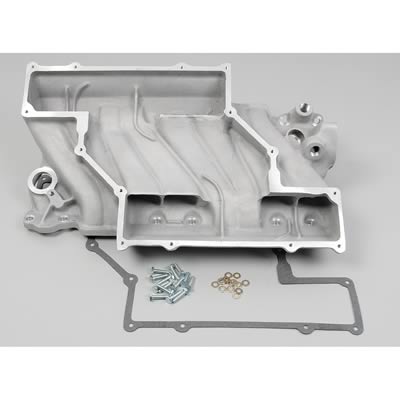
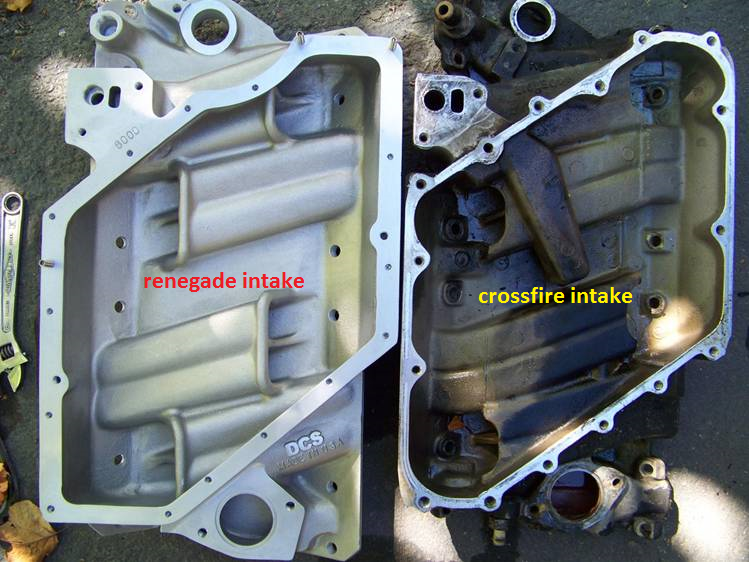
below the offy intake (below UPPER, the CROSSFIRE with its MUCH SMALLER RUNNERS LOWER)
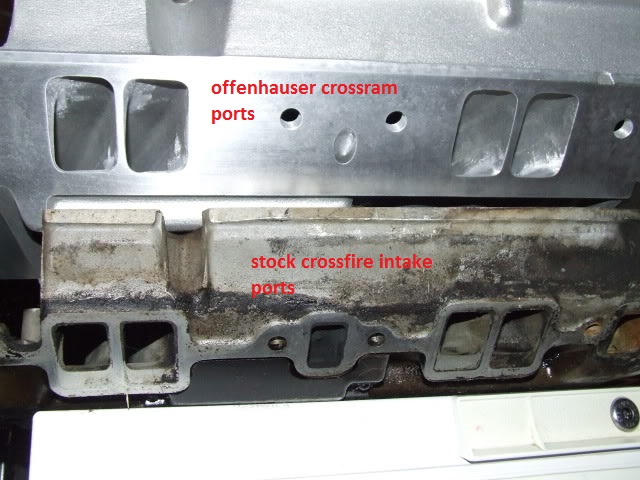
http://garage.grumpysperformance.com/index.php?threads/the-cross-ram-intake.623/#post-53061
If you intend to build a SBC with a corvette cross fire engine as a starting point,
we certainly have a good deal of related info you can use.
we can sure help you make a lot fewer mistakes and help select good matched parts.
THERES MORE,
BUT ID START WITH THESE THREADS
(and links and sub-links)
carefully reading the threads and links will be very helpful.
as youll see the web site is set up to teach and answer questions and if you have anything ,
youve learned that might help other members ,please post the tips, pictures and info.
http://garage.grumpysperformance.co...egade-intake-for-cross-fires.2796/#post-54235
http://garage.grumpysperformance.com/index.php?threads/got-a-cross-fire-corvette.640/#post-5467
http://garage.grumpysperformance.co...-fire-intake-porting-or-upgrade.102/#post-126
http://garage.grumpysperformance.com/index.php?threads/head-and-cam-swap-82-cfi.10412/#post-43216
http://garage.grumpysperformance.com/index.php?threads/crossfire-sleeper.12732/page-2#post-69838
http://garage.grumpysperformance.com/index.php?threads/ported-crossfire-383.10240/#post-41065
http://garage.grumpysperformance.com/index.php?threads/got-a-cross-fire-corvette.640/#post-25767
theres a great deal that can be done, but I'm forced to point out that the Stock cylinder heads and intake are killing the engines potential,
and obviously both your budget and skills might limit or increase your options,
upgrading the intake and heads and cam will be key to good results,
carefully selecting match components increases your chances of having a very impressive car when your done.
obviously a low restriction exhaust and headers and possibly a increase in compression and displacement sure helps
where the chevy crossfire intake design fails is the port size runner length and the cylinder heads were all designed to maximize off idle torque with almost no concern for power potential once the rpm range exceeded 4000 rpm,
(exactly where the typical offanhauser cross ram intake just starts to shine in its power curve, with its much larger and more efficient intake design)
crossfire , (notice the much smaller runner size , less than 1/2 the cross sectional volume of the offy)

the 1984 cross fire vetttes L83 engine has some of the worst OEM heads ever put on any corvette
- Horsepower: 205 HP @ 4,300 RPM
- Torque: 290 lb-ft @ 2,800 rpm
- Compression Ratio: 9:1
- Displacement: 5.7 Litre/350 Cubic Inches
- Cylinder Bore: 4.00 inches
- Stroke: 3.48 inches
As noteworthy as these features appeared to be on the surface, much of the L83’s potential performance was stifled due to GM’s use of restrictive, undersized ports for the Cross-Fire’s intake. These ports were only ⅔ the size of those on the Cross-Fire’s cylinder heads, and as a result, limited maximum flow to no more than 475-cfm.
As a product of this restrictive intake flow, the L83’s torque peaked at only 2,800 RPM, falling off sharply once reaching 4,000 RPM. According to GM, this level of restriction was purposely engineered with the intent of providing more usable street torque. However, many have theorized that this was no more than a ploy to increase fuel economy, in a bid to meet CAFE mandates.
Even with its limitations, the L83 produced 205 horsepower at 4,300 RPM and 290 lb-ft. of torque at 2,800 RPM, with a 9:1 compression ratio. The L83 equipped 1982 Corvette was capable of completing a 0-60 MPH pull in 8.1 seconds and posted 15.9 second times in the quarter-mile. While many perceive these figures to be mediocre at best, the 1982 Corvette still holds the distinction as being one of the fastest new American production cars during its given production year.
OFFANHAUSER BELOW
https://oldcarmemories.com/1982-1984-l83-5-7-liter-cross-fire-injection-v8-love-it-or-hate-it/


below the offy intake (below UPPER, the CROSSFIRE with its MUCH SMALLER RUNNERS LOWER)

http://garage.grumpysperformance.com/index.php?threads/the-cross-ram-intake.623/#post-53061
If you intend to build a SBC with a corvette cross fire engine as a starting point,
we certainly have a good deal of related info you can use.
we can sure help you make a lot fewer mistakes and help select good matched parts.
THERES MORE,
BUT ID START WITH THESE THREADS
(and links and sub-links)
carefully reading the threads and links will be very helpful.
as youll see the web site is set up to teach and answer questions and if you have anything ,
youve learned that might help other members ,please post the tips, pictures and info.
http://garage.grumpysperformance.co...egade-intake-for-cross-fires.2796/#post-54235
http://garage.grumpysperformance.com/index.php?threads/got-a-cross-fire-corvette.640/#post-5467
http://garage.grumpysperformance.co...-fire-intake-porting-or-upgrade.102/#post-126
http://garage.grumpysperformance.com/index.php?threads/head-and-cam-swap-82-cfi.10412/#post-43216
http://garage.grumpysperformance.com/index.php?threads/crossfire-sleeper.12732/page-2#post-69838
http://garage.grumpysperformance.com/index.php?threads/ported-crossfire-383.10240/#post-41065
http://garage.grumpysperformance.com/index.php?threads/got-a-cross-fire-corvette.640/#post-25767
theres a great deal that can be done, but I'm forced to point out that the Stock cylinder heads and intake are killing the engines potential,
and obviously both your budget and skills might limit or increase your options,
upgrading the intake and heads and cam will be key to good results,
carefully selecting match components increases your chances of having a very impressive car when your done.
obviously a low restriction exhaust and headers and possibly a increase in compression and displacement sure helps
Last edited:
the basic cross ram intake design has a lot going for it, its very compact and efficient.
where the chevy crossfire intake design fails is the port size runner length and the cylinder heads were all designed to maximize off idle torque with almost no concern for power potential once the rpm range exceeded 4000 rpm,
(exactly where the typical offanhauser cross ram intake just starts to shine in its power curve, with its much larger and more efficient intake design)
crossfire , (notice the much smaller runner size , less than 1/2 the cross sectional volume of the offy)
http://garage.grumpysperformance.com/index.php?threads/the-cross-ram-intake.623/#post-53061
I read that thread a lot before I got started!
With the cam I am running- an Erson E110040- it seems to like the Renegade intake. Not as restrictive as GM (Renegade & OEM Crossfire intakes in attached photo) and not as open as an Offy. The Renegade seems to be a decent mid point.
- Duration @ .050:
- 224/234
- Duration Advertised:
- 290/300
- Gross Lift:
- .465/.488
- Lobe Center:
- 112
- Part Name:
- Engine Camshaft
- RPM Range:
- 2000-4800
So... I hope what the VE tells me is that I have the rear gear, cam, intake, bored TBs, and EBL tuning working together as a system.
Attachments
CJaguar265
New Member
I would like to build a 350/355 crossfire injection motor what parts do I need
we are all forced to work on limited budgets, but if your going to maximize a cross fire engine combo...
the most restrictive components are the stock intake cylinder heads, exhaust system, and cam
Id suggest you replace the intake with that renegade, intake and I do at least some port and runner clean-up port work,
a great deal of the info you may want can be calculated after carefully measuring the intake port and runner length and cross sectional areas.(remember its not the intake port gasket cross sectional opening, cross sectional area, its the smallest part of the port cross sectional area and valve throat areas that limit port flow rates)
if as an example we selected a port with about a 2 sq inch cross sectional area, you'll find max torque on a 350 will fall near 4000-rpm and port stall near 6000-rpm thus it makes sense to match the cam timing and lift/duration and the drive train gearing to match the rpm range,power curve and port flow.
or put a bit differently, theres no sense in selecting a cam designed to operate well at 7600 rpm if you port stalls at 6300 rpm
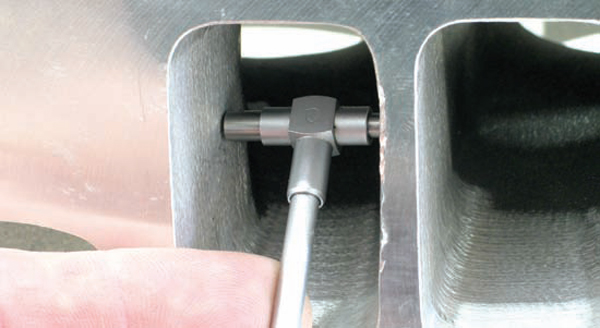

http://users.erols.com/srweiss/calccsa.htm
http://users.erols.com/srweiss/calcplv.htm
http://users.erols.com/srweiss/calchpaf.htm
http://www.wallaceracing.com/chokepoint.php
http://www.rbracing-rsr.com/runnertorquecalc.html
if you have a 1982-1984 c4 corvette
the swap to a RENEGADE intake for the O.E.M intake, simply because it flows significantly more air,
just the intake alone is easily worth about 20 hp, but if its matched to the correct cam and heads,
its going to be a noticeable improvement, over the results, you would potentially see with the O.E.M intake.
the originally use #624 heads are very restrictive, the original cams are no where close to ideal.
youll never get the full power potential from the RENEGADE untill you upgrade the cylinder heads and cam you use with that intake,
a commonly used and well documented combo (but certainly not your only options)
is the crane 114142
the OEM crossfire heads for 1984 are casting number 462624 76cc heads
462624 chevy head flow numbers
(these are the heads that came on the 1984 corvettes)
just a bit of info on those stock #624 head flow rates
.......intake....exhaust
.100..44..........41cfm
.200..101..........82cfm
.300.155..........125cfm
.400..182..........137cfm
.500..196..........140cfm
(THATS PATHETIC)
read this
https://www.hotrod.com/articles/ccrp-1209-eight-budget-sbc-head-shootout/
The 624 is a light weight version of the 882 head.,. The 624 is one of the worst that GM produced and not intended for high performance use.
every time I hear that MYTH,
( that starts out with, BUT THE 1984 MAKES GOBS OF TORQUE) I want to point out a few facts
http://www.stingray.nu/tips/tech84.htm
right from Chevy (1984 vette)
Net HP @ RPM 205 @ 5200
Net Torque @ RPM 290 @ 2800
Comp. Ratio 9.0:1


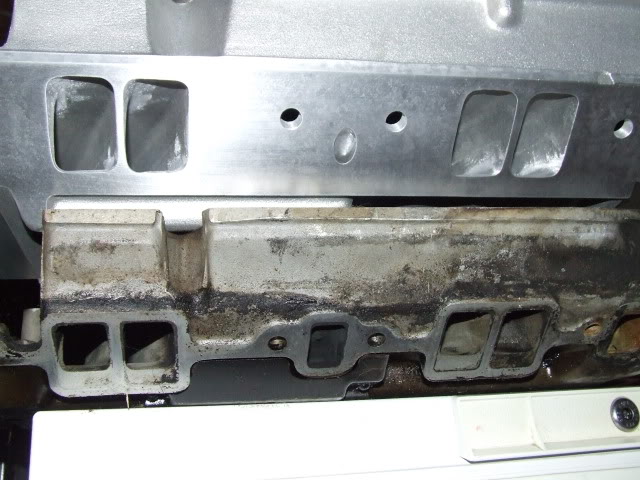
http://purplesagetradingpost.com/sumner/techinfo/heads1.html
http://garage.grumpysperformance.com/index.php?threads/got-a-cross-fire-corvette.640/#post-50502
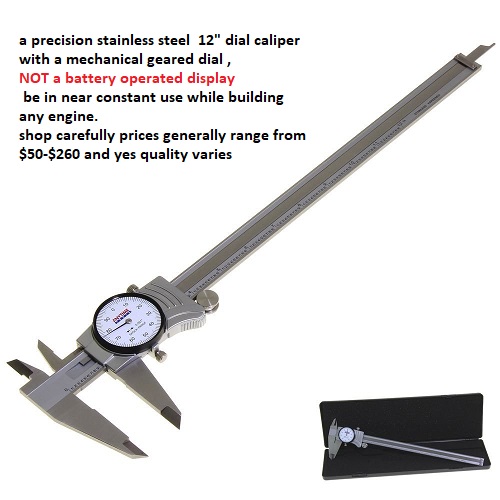
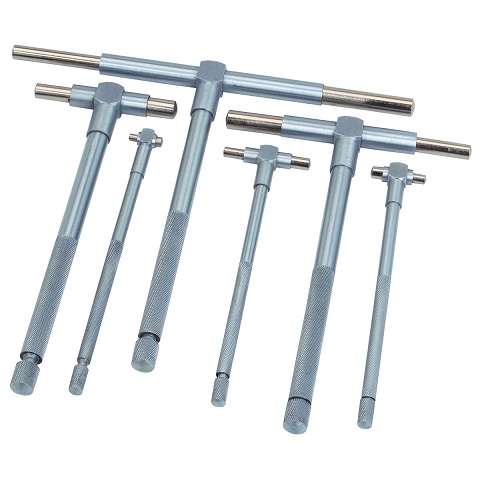

http://www.walmart.com/ip/Texas-Instruments-TI-30X-IIS-Scientific-Calculator/1535939
http://www.summitracing.com/parts/cca-5605/overview/
related info, that you might need
http://garage.grumpysperformance.co...heads-for-small-block-chevys.3293/#post-26213
http://garage.grumpysperformance.com/index.php?threads/what-are-these-heads.4702/#post-12742
http://garage.grumpysperformance.co...-by-step-guide-with-pictures.5378/#post-71848
http://garage.grumpysperformance.co...ther-efi-intake-manifold-info.431/#post-26322
http://garage.grumpysperformance.com/index.php?threads/porting-can-help.462/page-3#post-59145
http://garage.grumpysperformance.co...ads-tuned-intake-turbulence.12998/#post-67611
Volume (CCs) of Head Gasket
CCs of Head Gasket = Bore x Bore x 12.87 x Thickness of Head Gasket
COMMON SBC INTAKE PORTS
felpro # 1204=Port Size: 1.23" x 1.99"=2.448 sq inches
felpro # 1205=Port Size: 1.28" x 2.09"=2.67 sq inches
felpro # 1206=Port Size: 1.34" x 2.21"=2.96 sq inches
felpro # 1207=Port Size: 1.38" x 2.28"=3.146 sq inches
felpro # 1209=Port Size: 1.38" x 2.38"=3.28 sq inches
felpro # 1255 VORTEC=Port Size: 1.08" x 2.16"-2.33 sq inches
felpro # 1263=Port Size: 1.31" x 2.02"=2.65 sq inches
felpro # 1266=Port Size: 1.34" x 2.21"=2.96 sq inches
felpro # 1284 LT1=Port Size: 1.25 x 2.04''=2.55 sq inches
felpro # 1289 FASTBURN=Port Size: 1.30" x 2.31" 3.00 sq inches
http://users.erols.com/srweiss/calccsa.htm
Your RPM computed from your Cross Sectional Area of 1.95
(the smaller AFR HEADS)
and Bore of 4.03 and Stroke of 3.75 is 5,569.12 .
Your RPM computed from your Cross Sectional Area of 2.05
(the Larger AFR HEADS)
and Bore of 4.03 and Stroke of 3.75 is 5,854.72 .
you,ll barely notice the about 300 rpm shift in the power band on the lower part of rpm range but appreciate it much more on the upper edge of that power curve
heres a chart FROM THE BOOK,HOW TO BUILD BIG-INCH CHEVY SMALL BLOCKS with some common cross sectional port sizes
(measured at the smallest part of the ports)
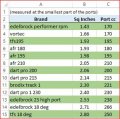
USE THE CALCULATORS
http://www.rbracing-rsr.com/runnertorquecalc.html
http://www.wallaceracing.com/chokepoint.php
http://www.wallaceracing.com/header_length.php
http://www.superchevy.com/how-to/en...-0902-chevy-engine-port-variations-measuring/
http://www.hotrod.com/articles/choosing-the-right-camshaft/
http://garage.grumpysperformance.com/index.php?threads/bits-of-383-info.38/
http://www.ecklerscorvette.com/corv...=25-324816-1&gclid=CLS6s6-l_NMCFYMSgQoddVYHsg
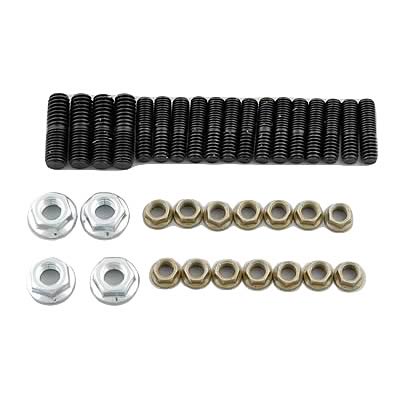
On oil pans I prefer studs, and an oil pan back plate

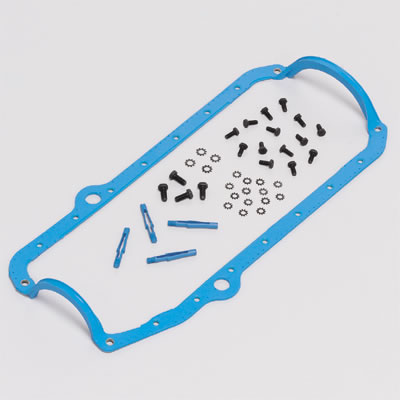
you might want to Use with P/N 12553058 RH and P/N 12553059 LH oil pan reinforcement plates to distribute the bolt stress on the oil pan rail for 1985 and earlier oil pans P/N 14088501 (LH) and P/N 14088502 (RH).1986 and newer
Id say its a VERY bad idea personally , if you shop carefully you can find a reasonably priced 6- 7 quart oil pan that should help engine durability.
SHOP CAREFULLY ,
WHEN YOU GO TO BUY AN OIL PAN for your engine or transmission,
<AND ASK LOTS OF QUESTIONS ABOUT WHAT WILL FIT YOUR CAR CORRECTLY,
AND ASK FOR SUGGESTIONS ON MATCHING COMPONENTS OR PARTS THAT WON,T FIT
many guys ignore proven combos, because it may cost more than they want to spend, and either insist on using components they own currently or think they can buy far less expensively than the components, I know from experience will actually work.
MILODON,
http://www.milodon.com/
CHAMP
http://www.champpans.com/products/c/oil-pans/
CANTON,
https://www.cantonracingproducts.com/category/1501/Chevy-SS--Road-Race-Oil-Pans/1.html
MOROSO
http://www.moroso.com/
http://www.shopmoroso.com/eb/catalog/navigationPath/1::Moroso Performance Products/1100001::Oil Pans/11005::Chevy Big Block, Gen VGen VI?resetOffset=true&entryId=catalog.productgroup.1110000111005&expand=true&menuId=main.menu
AVIAID
http://aviaid.com/shopsite_sc/store/html/ws_oilpns_sbc.html
STEFS
http://www.stefs.com/products/oilpans/circletrackwetsump.htm
HAMBURGERPERFORMANCE
http://www.hamburgersperformance.com/
KEVKO
https://kevko.myshopify.com/
IF you've wondered why I suggest buying and using a well designed BAFFLED oil pan with 7-8 quart capacity its to prevent the oil from uncovering the oil pump pick-up under performance use.
without control baffles oil sloshes away from the oil pump pick-up



obviously you,ll want to ask specific questions as to the ,
ground clearance, starters that can be used,
oil filters, oil dip stick, location,
oil pan gasket matching both pan and lock used.
rear oil seal type,and frame and suspension clearance issues,
related to your car, before you purchase any oil pan
I think the hamburger oil pan is a better value At $242
notice the better oil control features
https://www.summitracing.com/parts/ham-1088/overview/
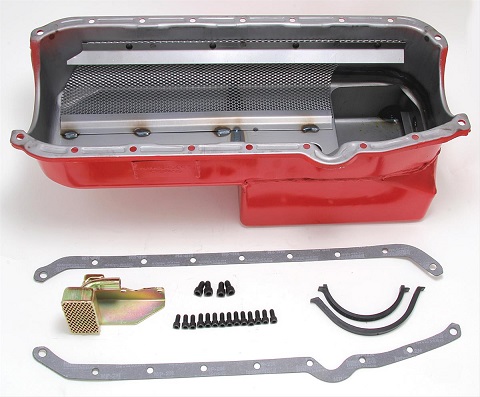
http://www.milodon.com/oil-pans/street-oil-pans-sbchevy.asp
http://www.jegs.com/p/Moroso/Moroso-Street-Strip-Oil-Pans/763991/10002/-1
https://www.summitracing.com/search/brand/hamburgers-performance/part-type/oil-pans
https://www.cantonracingproducts.com/cgi-bin/commerce.cgi?search=action&category=1301
http://www.stefsperformance.net/ste...oil-pans/aluminum-oil-pans-pumps#!prettyPhoto
http://garage.grumpysperformance.co...l-level-in-oil-pan-with-engine-running.11263/
http://garage.grumpysperformance.com/index.php?threads/oil-system-mods-that-help.2187/#post-7231
http://garage.grumpysperformance.com/index.php?threads/bearings-and-oil-flow.150/#post-68206
http://garage.grumpysperformance.co...ed-holes-in-bearings-shells.10750/#post-64733
http://garage.grumpysperformance.co...es-engine-builders-magazine.11965/#post-57052
http://garage.grumpysperformance.co...te-filter-require-a-new-pump.3144/#post-16458
http://garage.grumpysperformance.co...l-cooler-increases-durability.176/#post-12473
http://garage.grumpysperformance.co...essure-bye-pass-circuit-works.3536/#post-9379
http://garage.grumpysperformance.com/index.php?threads/oil-system-basics.615/#post-1731
http://garage.grumpysperformance.com/index.php?threads/engine-oil-temps.296/#post-361
http://garage.grumpysperformance.com/index.php?threads/whats-a-windage-tray-do.64/
http://garage.grumpysperformance.com/index.php?threads/installing-an-oil-pump-pick-up-tube.1800/
Id suggest you call AFR and brodix about cylinder heads in the 180cc-200cc range
the key to good power is in good heads maximizing the mid rpm air flow and a cam that will match the intake and head flow characteristics, you might also consider a 383 stroker assembly to maximize low speed torque.
(its a very cost effective way to boost torque and hp an easy extra 40 ft lbs and 45 hp in most cases)
rebuilt or new chevy 383 crank
http://www.superchevy.com/how-to/project-cars/sucp-0706-small-block-chevy-stroker-kit/


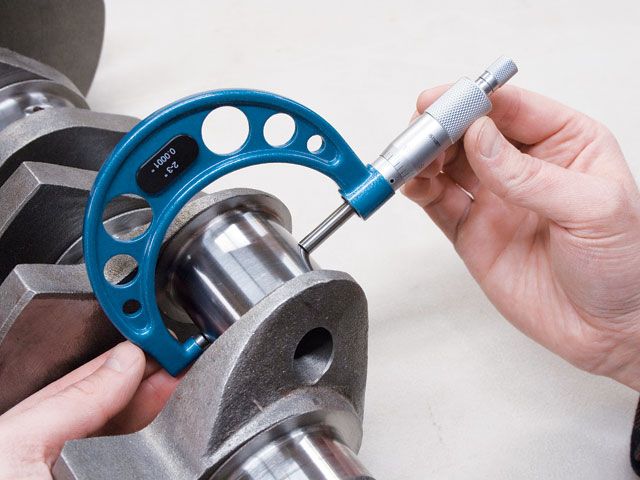
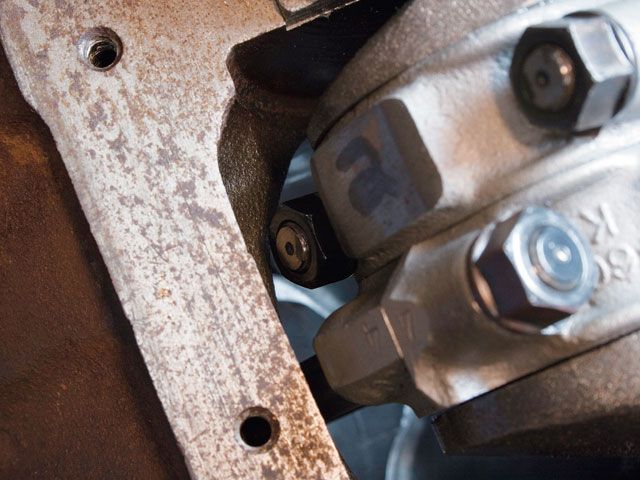
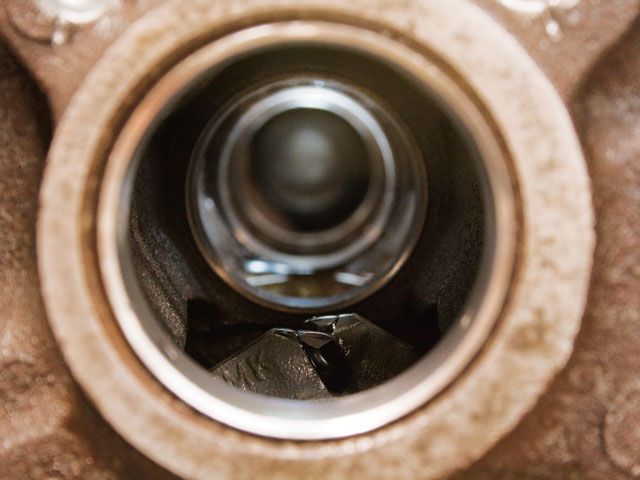
http://www.airflowresearch.com/195cc-sbc-street-cylinder-head/
http://brodix.com/heads-2/small-block-chevrolet-compatible-heads/ik-series
Id suggest getting the static compression near 10:1
Id strongly suggest you replace the exhaust system with a 3" and (X) pipe design with low flow restriction mufflers
http://www.melrosecorvette.com/1984-1985-l98-corvette-header-system/
and add full length headers
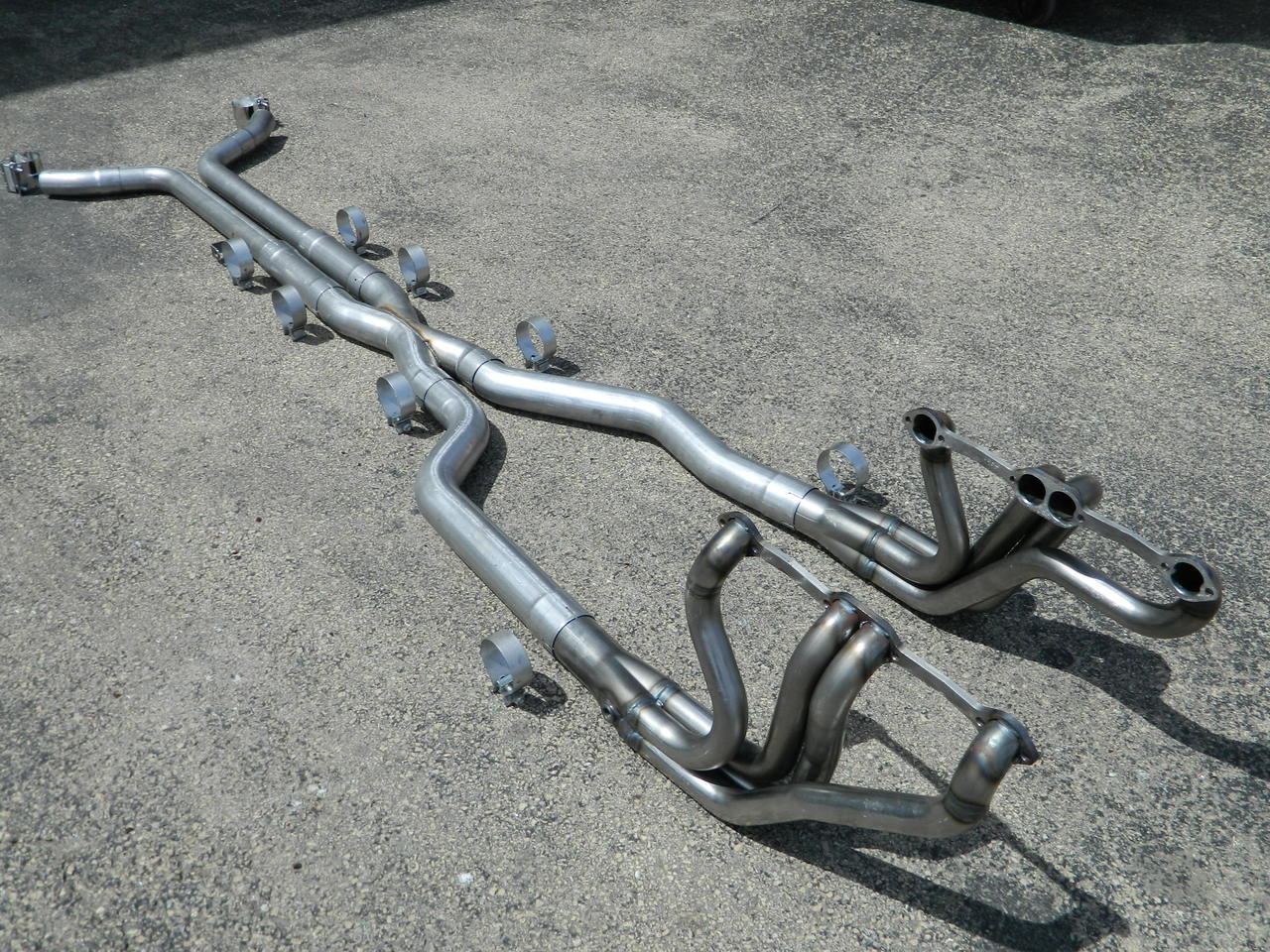

keep in mind that a properly designed exhaust system and headers goes a very long way towards increasing the efficiency of the intake manifold and head flow , and remember that the better the heads and the more effective the exhaust scavenging the less duration the cam used will require!
Id suggest a mild hydraulic roller cam and use of quality roller 1.6:1 ratio rockers
Id be looking for something in the 215-220 duration on the intake at .050 lift, call and get suggestions from crane, crower, erson, etc.
the basic intake design and port config of that renegade intake design will limit the engines power band to near 2000 rpm-6000 rpm so a longer duration cam will mostly reduce lower rpm torque
http://www.cranecams.com/product/cart.php?m=product_detail&p=24189
https://www.crower.com/camshafts/ch...ft-hyd-roller-cam-small-base-circle-4120.html
Id suggest a 3.73 rear gear ratio
Id suggest a 2400 rpm stall converter
these two drive train mods maximize the cars ability to use the power produced
Verifying your engines clearances, and rocker geometry, and use of A rocker stud girdle and high quality roller rockers go a long way towards maintaining valve train durability
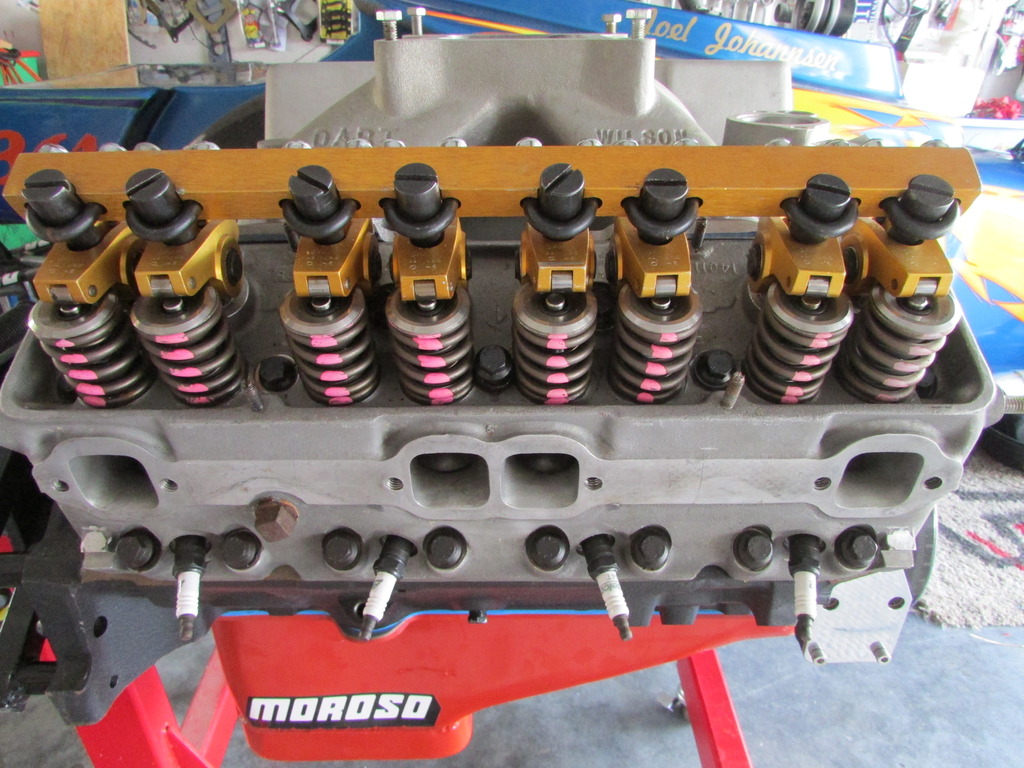
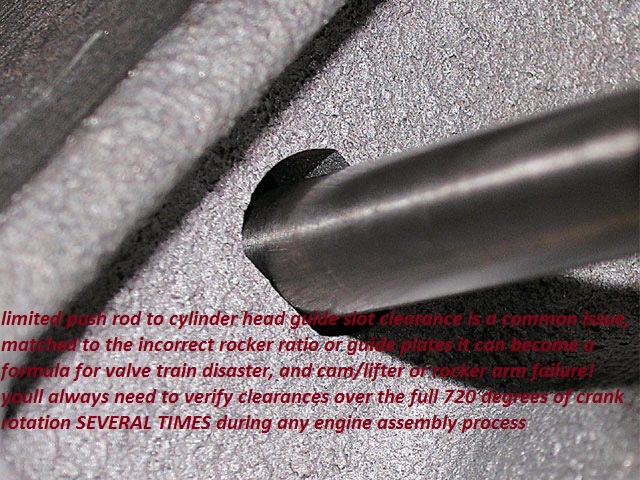
first CHEVK CLEARANCES AND GEOMETRY
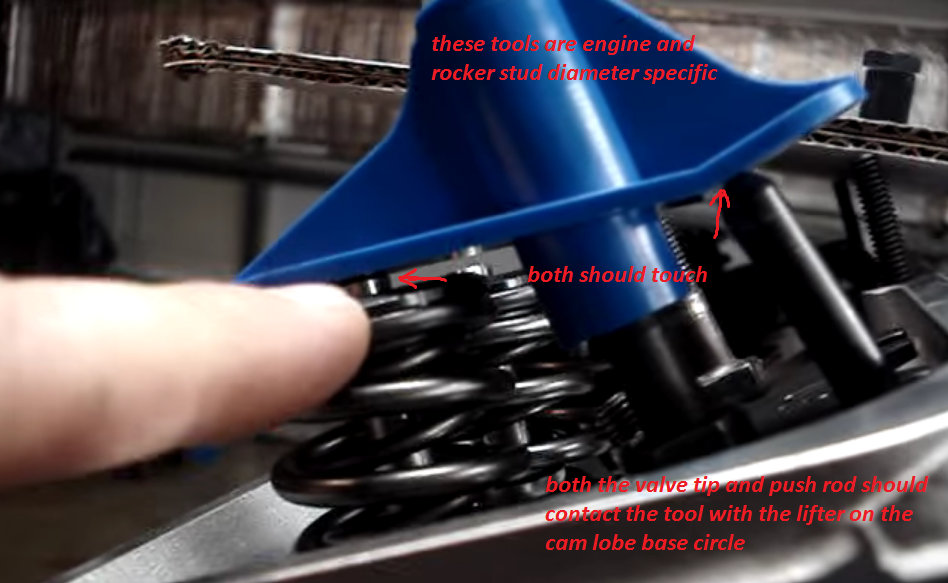
the higher rocker ratio increases the effective acceleration rate of the cams lobe ramp, being transmitted to the valve so the higher ratio tends to cause valve control issues at a lower rpm level UNLESS the valve spring load rates increased to compensate. this allows a greater area of lift or open port area so the engine will tend to run better in the mid rpm range, generally making it well worth while as the mile duration cam can use the extra lift and duration at the valve.
carefully reading through
these links and sub links will help
ITS GOING to be well worth the time and effort
http://garage.grumpysperformance.com/index.php?threads/renegade-intake-for-cross-fires.2796/
http://garage.grumpysperformance.com/index.php?threads/1984-fuel-pressure.11776/#post-55675
http://garage.grumpysperformance.com/index.php?threads/got-a-cross-fire-corvette.640/#post-50502
http://garage.grumpysperformance.co...lf-the-time-starts-and-dies.11187/#post-50245
http://garage.grumpysperformance.com/index.php?threads/1984-crossfire-vette-won-t-run-right.10096/
http://garage.grumpysperformance.com/index.php?threads/tweaking-a-350-383.13087/#post-68195
http://garage.grumpysperformance.com/index.php?threads/what-to-look-for-in-a-good-engine-combo.9930/
http://garage.grumpysperformance.com/index.php?threads/383-information-overload.11137/
http://garage.grumpysperformance.com/index.php?threads/matching-parts-and-a-logical-plan.7722/
the most restrictive components are the stock intake cylinder heads, exhaust system, and cam
Id suggest you replace the intake with that renegade, intake and I do at least some port and runner clean-up port work,
a great deal of the info you may want can be calculated after carefully measuring the intake port and runner length and cross sectional areas.(remember its not the intake port gasket cross sectional opening, cross sectional area, its the smallest part of the port cross sectional area and valve throat areas that limit port flow rates)
if as an example we selected a port with about a 2 sq inch cross sectional area, you'll find max torque on a 350 will fall near 4000-rpm and port stall near 6000-rpm thus it makes sense to match the cam timing and lift/duration and the drive train gearing to match the rpm range,power curve and port flow.
or put a bit differently, theres no sense in selecting a cam designed to operate well at 7600 rpm if you port stalls at 6300 rpm


http://users.erols.com/srweiss/calccsa.htm
http://users.erols.com/srweiss/calcplv.htm
http://users.erols.com/srweiss/calchpaf.htm
http://www.wallaceracing.com/chokepoint.php
http://www.rbracing-rsr.com/runnertorquecalc.html
if you have a 1982-1984 c4 corvette
the swap to a RENEGADE intake for the O.E.M intake, simply because it flows significantly more air,
just the intake alone is easily worth about 20 hp, but if its matched to the correct cam and heads,
its going to be a noticeable improvement, over the results, you would potentially see with the O.E.M intake.
the originally use #624 heads are very restrictive, the original cams are no where close to ideal.
youll never get the full power potential from the RENEGADE untill you upgrade the cylinder heads and cam you use with that intake,
a commonly used and well documented combo (but certainly not your only options)
is the crane 114142
the OEM crossfire heads for 1984 are casting number 462624 76cc heads
462624 chevy head flow numbers
(these are the heads that came on the 1984 corvettes)
just a bit of info on those stock #624 head flow rates
.......intake....exhaust
.100..44..........41cfm
.200..101..........82cfm
.300.155..........125cfm
.400..182..........137cfm
.500..196..........140cfm
(THATS PATHETIC)
read this
https://www.hotrod.com/articles/ccrp-1209-eight-budget-sbc-head-shootout/
The 624 is a light weight version of the 882 head.,. The 624 is one of the worst that GM produced and not intended for high performance use.
every time I hear that MYTH,
( that starts out with, BUT THE 1984 MAKES GOBS OF TORQUE) I want to point out a few facts
http://www.stingray.nu/tips/tech84.htm
right from Chevy (1984 vette)
Net HP @ RPM 205 @ 5200
Net Torque @ RPM 290 @ 2800
Comp. Ratio 9.0:1



http://purplesagetradingpost.com/sumner/techinfo/heads1.html
http://garage.grumpysperformance.com/index.php?threads/got-a-cross-fire-corvette.640/#post-50502



http://www.walmart.com/ip/Texas-Instruments-TI-30X-IIS-Scientific-Calculator/1535939
http://www.summitracing.com/parts/cca-5605/overview/
related info, that you might need
http://garage.grumpysperformance.co...heads-for-small-block-chevys.3293/#post-26213
http://garage.grumpysperformance.com/index.php?threads/what-are-these-heads.4702/#post-12742
http://garage.grumpysperformance.co...-by-step-guide-with-pictures.5378/#post-71848
http://garage.grumpysperformance.co...ther-efi-intake-manifold-info.431/#post-26322
http://garage.grumpysperformance.com/index.php?threads/porting-can-help.462/page-3#post-59145
http://garage.grumpysperformance.co...ads-tuned-intake-turbulence.12998/#post-67611
Volume (CCs) of Head Gasket
CCs of Head Gasket = Bore x Bore x 12.87 x Thickness of Head Gasket
COMMON SBC INTAKE PORTS
felpro # 1204=Port Size: 1.23" x 1.99"=2.448 sq inches
felpro # 1205=Port Size: 1.28" x 2.09"=2.67 sq inches
felpro # 1206=Port Size: 1.34" x 2.21"=2.96 sq inches
felpro # 1207=Port Size: 1.38" x 2.28"=3.146 sq inches
felpro # 1209=Port Size: 1.38" x 2.38"=3.28 sq inches
felpro # 1255 VORTEC=Port Size: 1.08" x 2.16"-2.33 sq inches
felpro # 1263=Port Size: 1.31" x 2.02"=2.65 sq inches
felpro # 1266=Port Size: 1.34" x 2.21"=2.96 sq inches
felpro # 1284 LT1=Port Size: 1.25 x 2.04''=2.55 sq inches
felpro # 1289 FASTBURN=Port Size: 1.30" x 2.31" 3.00 sq inches
http://users.erols.com/srweiss/calccsa.htm
Your RPM computed from your Cross Sectional Area of 1.95
(the smaller AFR HEADS)
and Bore of 4.03 and Stroke of 3.75 is 5,569.12 .
Your RPM computed from your Cross Sectional Area of 2.05
(the Larger AFR HEADS)
and Bore of 4.03 and Stroke of 3.75 is 5,854.72 .
you,ll barely notice the about 300 rpm shift in the power band on the lower part of rpm range but appreciate it much more on the upper edge of that power curve
heres a chart FROM THE BOOK,HOW TO BUILD BIG-INCH CHEVY SMALL BLOCKS with some common cross sectional port sizes
(measured at the smallest part of the ports)

USE THE CALCULATORS
http://www.rbracing-rsr.com/runnertorquecalc.html
http://www.wallaceracing.com/chokepoint.php
http://www.wallaceracing.com/header_length.php
http://www.superchevy.com/how-to/en...-0902-chevy-engine-port-variations-measuring/
http://www.hotrod.com/articles/choosing-the-right-camshaft/
http://garage.grumpysperformance.com/index.php?threads/bits-of-383-info.38/
http://www.ecklerscorvette.com/corv...=25-324816-1&gclid=CLS6s6-l_NMCFYMSgQoddVYHsg

On oil pans I prefer studs, and an oil pan back plate


you might want to Use with P/N 12553058 RH and P/N 12553059 LH oil pan reinforcement plates to distribute the bolt stress on the oil pan rail for 1985 and earlier oil pans P/N 14088501 (LH) and P/N 14088502 (RH).1986 and newer
Id say its a VERY bad idea personally , if you shop carefully you can find a reasonably priced 6- 7 quart oil pan that should help engine durability.
SHOP CAREFULLY ,
WHEN YOU GO TO BUY AN OIL PAN for your engine or transmission,
<AND ASK LOTS OF QUESTIONS ABOUT WHAT WILL FIT YOUR CAR CORRECTLY,
AND ASK FOR SUGGESTIONS ON MATCHING COMPONENTS OR PARTS THAT WON,T FIT
many guys ignore proven combos, because it may cost more than they want to spend, and either insist on using components they own currently or think they can buy far less expensively than the components, I know from experience will actually work.
MILODON,
http://www.milodon.com/
CHAMP
http://www.champpans.com/products/c/oil-pans/
CANTON,
https://www.cantonracingproducts.com/category/1501/Chevy-SS--Road-Race-Oil-Pans/1.html
MOROSO
http://www.moroso.com/
http://www.shopmoroso.com/eb/catalog/navigationPath/1::Moroso Performance Products/1100001::Oil Pans/11005::Chevy Big Block, Gen VGen VI?resetOffset=true&entryId=catalog.productgroup.1110000111005&expand=true&menuId=main.menu
AVIAID
http://aviaid.com/shopsite_sc/store/html/ws_oilpns_sbc.html
STEFS
http://www.stefs.com/products/oilpans/circletrackwetsump.htm
HAMBURGERPERFORMANCE
http://www.hamburgersperformance.com/
KEVKO
https://kevko.myshopify.com/
IF you've wondered why I suggest buying and using a well designed BAFFLED oil pan with 7-8 quart capacity its to prevent the oil from uncovering the oil pump pick-up under performance use.
without control baffles oil sloshes away from the oil pump pick-up



obviously you,ll want to ask specific questions as to the ,
ground clearance, starters that can be used,
oil filters, oil dip stick, location,
oil pan gasket matching both pan and lock used.
rear oil seal type,and frame and suspension clearance issues,
related to your car, before you purchase any oil pan
I think the hamburger oil pan is a better value At $242
notice the better oil control features
https://www.summitracing.com/parts/ham-1088/overview/

http://www.milodon.com/oil-pans/street-oil-pans-sbchevy.asp
http://www.jegs.com/p/Moroso/Moroso-Street-Strip-Oil-Pans/763991/10002/-1
https://www.summitracing.com/search/brand/hamburgers-performance/part-type/oil-pans
https://www.cantonracingproducts.com/cgi-bin/commerce.cgi?search=action&category=1301
http://www.stefsperformance.net/ste...oil-pans/aluminum-oil-pans-pumps#!prettyPhoto
http://garage.grumpysperformance.co...l-level-in-oil-pan-with-engine-running.11263/
http://garage.grumpysperformance.com/index.php?threads/oil-system-mods-that-help.2187/#post-7231
http://garage.grumpysperformance.com/index.php?threads/bearings-and-oil-flow.150/#post-68206
http://garage.grumpysperformance.co...ed-holes-in-bearings-shells.10750/#post-64733
http://garage.grumpysperformance.co...es-engine-builders-magazine.11965/#post-57052
http://garage.grumpysperformance.co...te-filter-require-a-new-pump.3144/#post-16458
http://garage.grumpysperformance.co...l-cooler-increases-durability.176/#post-12473
http://garage.grumpysperformance.co...essure-bye-pass-circuit-works.3536/#post-9379
http://garage.grumpysperformance.com/index.php?threads/oil-system-basics.615/#post-1731
http://garage.grumpysperformance.com/index.php?threads/engine-oil-temps.296/#post-361
http://garage.grumpysperformance.com/index.php?threads/whats-a-windage-tray-do.64/
http://garage.grumpysperformance.com/index.php?threads/installing-an-oil-pump-pick-up-tube.1800/
Id suggest you call AFR and brodix about cylinder heads in the 180cc-200cc range
the key to good power is in good heads maximizing the mid rpm air flow and a cam that will match the intake and head flow characteristics, you might also consider a 383 stroker assembly to maximize low speed torque.
(its a very cost effective way to boost torque and hp an easy extra 40 ft lbs and 45 hp in most cases)
rebuilt or new chevy 383 crank
http://www.superchevy.com/how-to/project-cars/sucp-0706-small-block-chevy-stroker-kit/





http://www.airflowresearch.com/195cc-sbc-street-cylinder-head/
http://brodix.com/heads-2/small-block-chevrolet-compatible-heads/ik-series
Id suggest getting the static compression near 10:1
Id strongly suggest you replace the exhaust system with a 3" and (X) pipe design with low flow restriction mufflers
http://www.melrosecorvette.com/1984-1985-l98-corvette-header-system/
and add full length headers

keep in mind that a properly designed exhaust system and headers goes a very long way towards increasing the efficiency of the intake manifold and head flow , and remember that the better the heads and the more effective the exhaust scavenging the less duration the cam used will require!
Id suggest a mild hydraulic roller cam and use of quality roller 1.6:1 ratio rockers
Id be looking for something in the 215-220 duration on the intake at .050 lift, call and get suggestions from crane, crower, erson, etc.
the basic intake design and port config of that renegade intake design will limit the engines power band to near 2000 rpm-6000 rpm so a longer duration cam will mostly reduce lower rpm torque
http://www.cranecams.com/product/cart.php?m=product_detail&p=24189
https://www.crower.com/camshafts/ch...ft-hyd-roller-cam-small-base-circle-4120.html
Id suggest a 3.73 rear gear ratio
Id suggest a 2400 rpm stall converter
these two drive train mods maximize the cars ability to use the power produced
Verifying your engines clearances, and rocker geometry, and use of A rocker stud girdle and high quality roller rockers go a long way towards maintaining valve train durability


first CHEVK CLEARANCES AND GEOMETRY

the higher rocker ratio increases the effective acceleration rate of the cams lobe ramp, being transmitted to the valve so the higher ratio tends to cause valve control issues at a lower rpm level UNLESS the valve spring load rates increased to compensate. this allows a greater area of lift or open port area so the engine will tend to run better in the mid rpm range, generally making it well worth while as the mile duration cam can use the extra lift and duration at the valve.
carefully reading through
these links and sub links will help
ITS GOING to be well worth the time and effort
http://garage.grumpysperformance.com/index.php?threads/renegade-intake-for-cross-fires.2796/
http://garage.grumpysperformance.com/index.php?threads/1984-fuel-pressure.11776/#post-55675
http://garage.grumpysperformance.com/index.php?threads/got-a-cross-fire-corvette.640/#post-50502
http://garage.grumpysperformance.co...lf-the-time-starts-and-dies.11187/#post-50245
http://garage.grumpysperformance.com/index.php?threads/1984-crossfire-vette-won-t-run-right.10096/
http://garage.grumpysperformance.com/index.php?threads/tweaking-a-350-383.13087/#post-68195
http://garage.grumpysperformance.com/index.php?threads/what-to-look-for-in-a-good-engine-combo.9930/
http://garage.grumpysperformance.com/index.php?threads/383-information-overload.11137/
http://garage.grumpysperformance.com/index.php?threads/matching-parts-and-a-logical-plan.7722/
Last edited:



